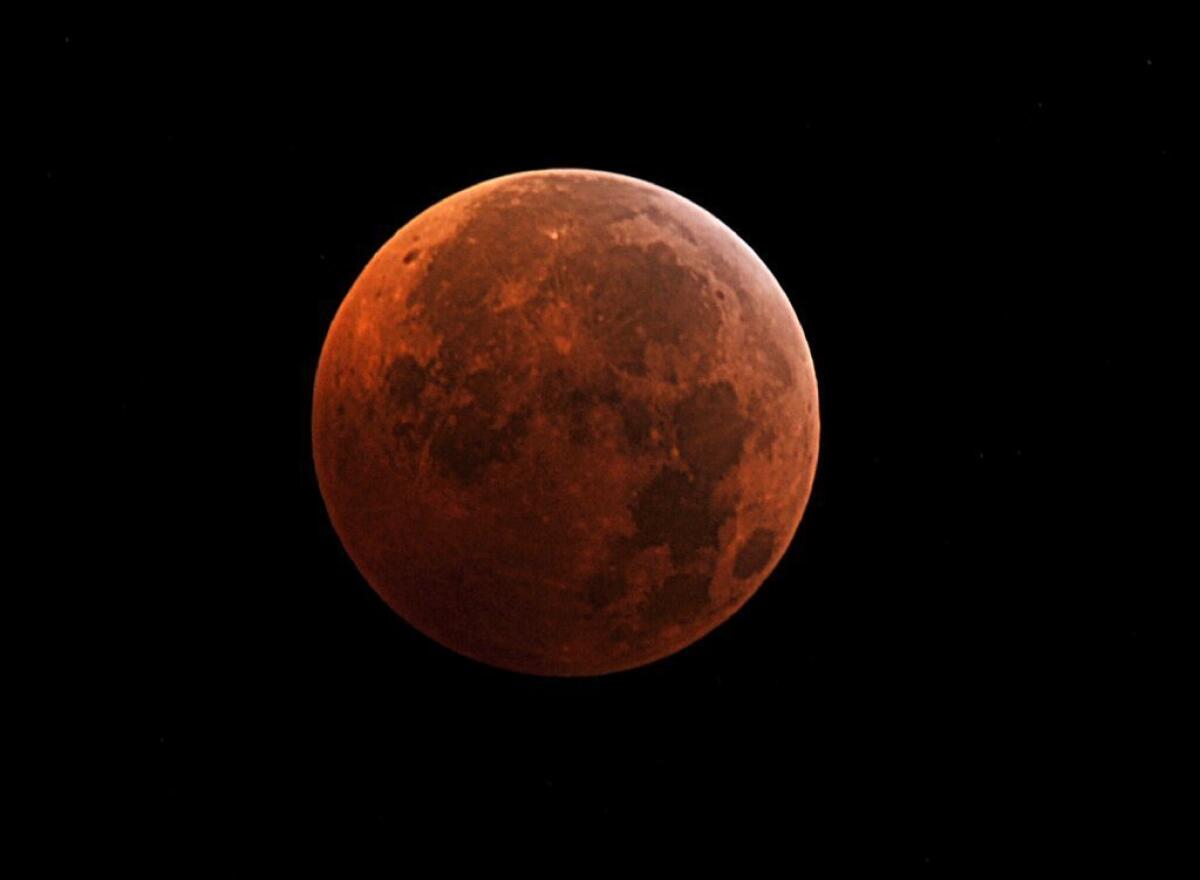Total lunar eclipse on April 14-15: What is a ‘blood moon’?

Mark your calendars, sky watchers: In one week a total lunar eclipse will turn the moon an eerie shade of red.
On April 14, at 10:58 p.m. PDT, the moon will move into Earth’s shadow. The full lunar eclipse -- when the entirety of the moon is shaded by Earth -- begins just over an hour later at 12:07 a.m. and lasts until 1:25 a.m. PDT.
[Updated, 11:13 a.m. PDT April 7: The eclipse will be visible across almost the entire continental United States, most of Canada and Central America and parts of South America. To see if it is visible from where you live, check out Sky and Telescope magazine’s map.]
The coming red moon, which you may have heard called a “blood moon,” is a perfectly natural occurrence.
Every time the moon passes completely into the shadow of the Earth, it turns a reddish color -- sometimes a bright copper, other times the dark reddish brown of dried blood.
The red color occurs because even when the Earth has moved directly between the moon and the sun, the scattered light from all the sunsets and sunrises on the rim of our globe still make it to the moon’s surface.
“If you were standing on the moon during a total lunar eclipse you would see the Earth as a black disk with a brilliant orange ring around it,” said Alan MacRobert, of Sky and Telescope magazine. “And this brilliant ring would be bright enough to dimly light up the lunar landscape.”
It has been a long time since a total lunar eclipse has been visible from the United States. According to MacRobert, the last one took place on Dec. 11, 2011. But the good news is there are three more on the way after this one.
This lunar eclipse is the first in what is called an eclipse tetrad -- four successive lunar eclipses with no partial lunar eclipses in between.
The next one, which also will be visible from nearly all of North America, will take place in October.
As for the intriguing term “blood moon” -- that appears to be new. MacRobert has been writing about astronomy since 1982, and had never encountered it before.
The astronomy website EarthSky.org suggests the phrase originated not with astronomers, but with a Christian pastor named John Hagee and his 2013 book, “Four Blood Moons: Something is about to change.”
According to Hagee’s ministry website, the book “explores the supernatural connection of certain celestial events to biblical prophecy.”
Regardless of whether or not you call it a blood moon, this lunar eclipse is definitely worth staying up late to see.
“I really urge everyone to watch the progress of this eclipse,” MacRobert said. “Whether you have a small telescope, a pair of binoculars or even just your naked eye -- you’ll be seeing part of the geometry of the cosmos happening right in front of your eyes.”
April is a going to be a great month for sky watching! Follow me on Twitter for more like this.







